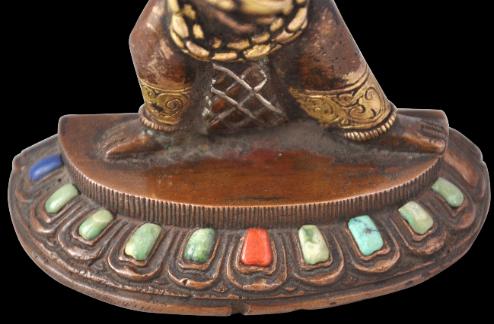
Bhairava, Nepal
Gilded Copper Image of Khadga Bhairab (Bhairava) inlaid with Silver & inset with Turquoise, Coral & Lapis Lazuli
Nepal
19th century
height: 12.5cm, width of base: 9cm, weight: 564g
This splendid cast copper or brass image is of Bhairava in his Khadga Bhairab (or Kala Bhairava) form (‘khadga’ means ‘sword’ – a reference to the sword that the image brandishes; ‘Bhairab’ is the Newari form of ‘Bhairava’.) Bhairab is the fierce manifestation of Shiva associated with destruction, and is one of the most important deities in the Kathmandu Valley.
The image is the product of nineteenth century Newar craftsmen and would have been produced to adorn a household or personal shrine. Typically women were not allowed to touch such images. Also, offerings of alcohol traditionally were made to it. Two of the most celebrated images of Bhairab in Nepal are the seventeenth century Kala Bhairab images in Kathmandu’s Hanuman Dhoka (Durbar Square). Anyone who told a lie in front of these images was believed to die immediately, vomiting blood. Government officials used to be sworn in before these images.
Bhairab in this image stands with his legs apart. He holds a ritual skull bowl in the hand of one of his four arms. A shield engraved with a floral motif is in another, and a sword in another. He wears a long necklace of bones, prominent ear ornaments and a high crown festooned with small skulls. Also around his neck is a prism-shaped
tayo pendant necklace, an ornament unique to the Newar people of the Kathmandu Valley. Rarely are images of this type cast with such a necklace.
Bhairab’s face, crown, sword, shield and jewellery have all been gilded. He has a long skirt about his waist, which has a lower, gilded band of etched scrollwork, and gilded waistcords with floral tassels at the back.
The image’s eyes, the third eye on his forehead, teeth and the sash between his legs are all inlaid with silver.
Bhairab stands on a lunette-form platform cast with lotus petals inlaid with turquoise, coral and lapis luzuli (one stone defficient).
The hollow base is enclosed with copper sheet engraved with a flower motif. (The enclosed base does include some ritual paper and other such contents which can be heard moving when the image is shaken.)
In all, this is a powerful unusual and very pleasing image of an important Nepalese deity. It has a fine overall patina.
References
Macdonald, A.W. & A. Vergati Stahl, Newar Art, Aris & Phillips Ltd, 1979.
Inventory no.: 1419
SOLD

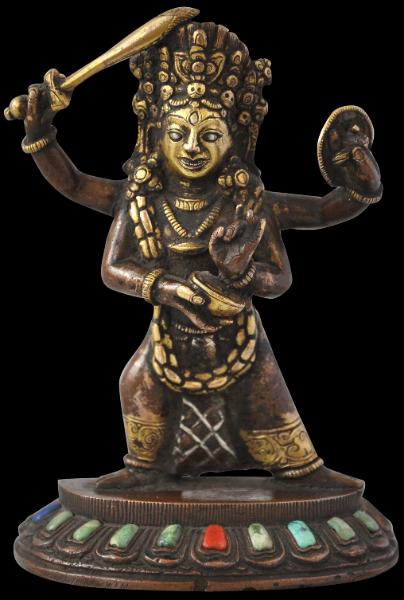
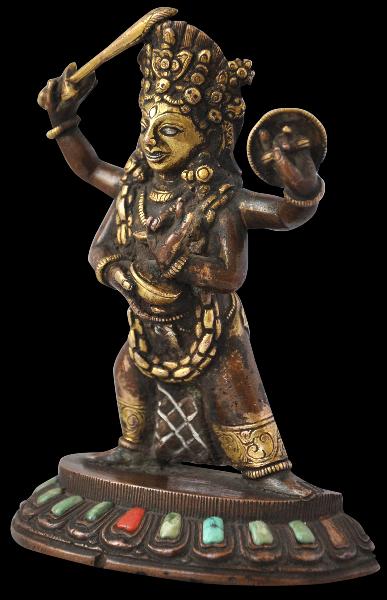
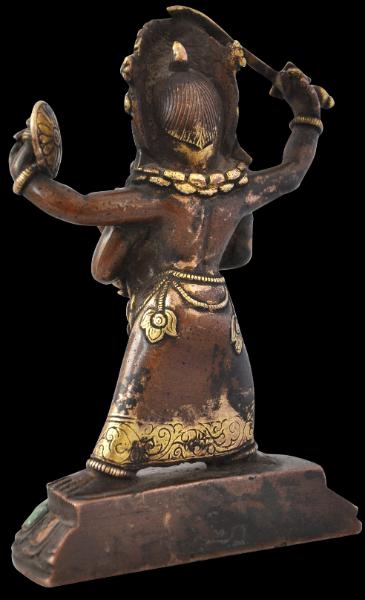
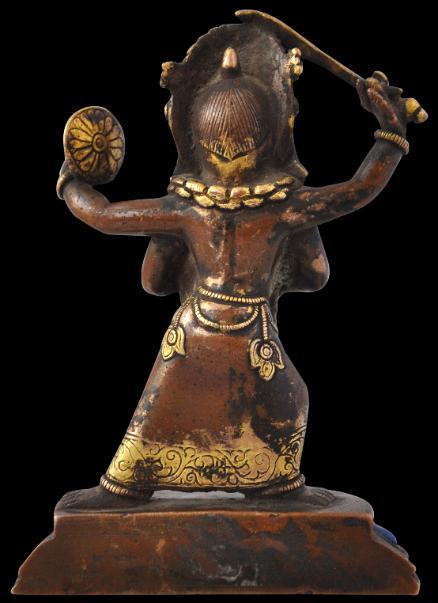
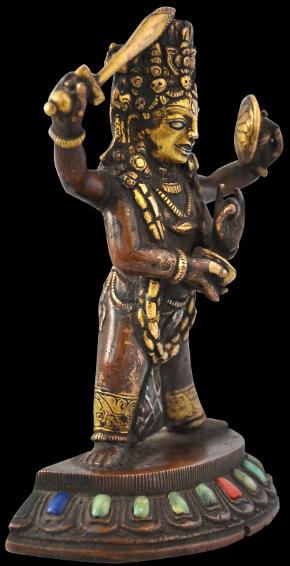
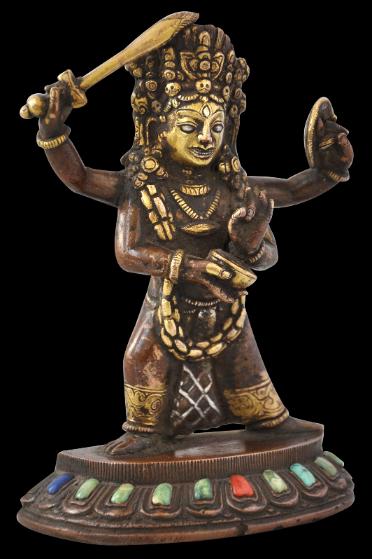
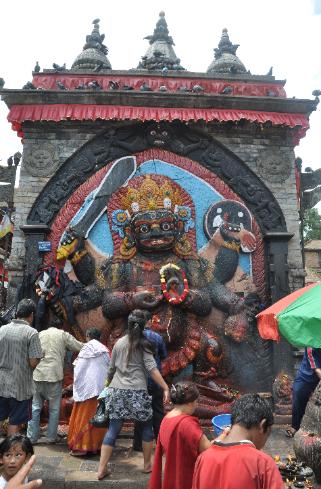
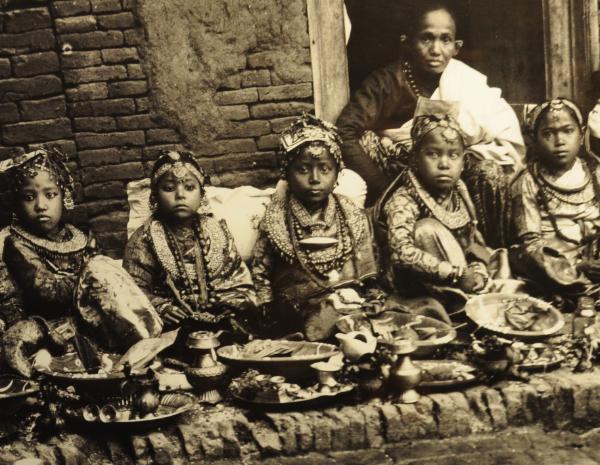
An early image of Newar girls taking part in a ceremony.
The girl third from the left wears a
tayo necklace of the type worn in the image here.
The seventeenth century Kala Bhairab image in Kathmandu’s Hanuman Dhoka (Durbar Square).
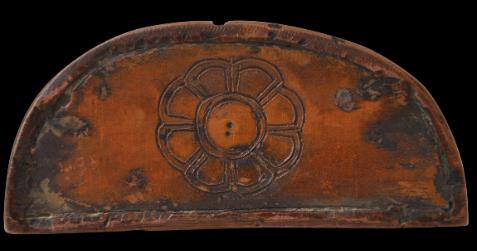
The base.

